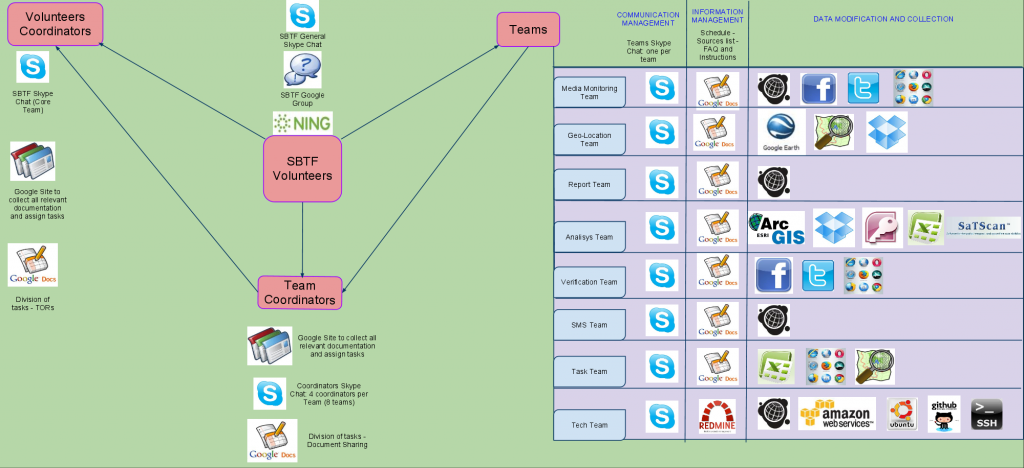When we launched the Task Force at the Crisis Mapping Conference, we offered to develop a model (i.e., processes, workflows, protocols, best practices, etc) for live crisis mapping that other communities could benefit from. In other words, our focus with the Task Force was first on people, then process and then technology. That is why we focused on recruiting volunteers and developing the processes necessary to deploy live crisis mapping operations. These processes comprise our activation protocols, workflows and modular team structures. We decided to apply these processes to the Ushahidi platform first since that’s what all original volunteers had direct experience in using, and what we as co-founders were most experienced in.
But the point of the Task Force was never (and still isn’t) to focus on one mapping technology over an other. The point is to connect volunteers and establish working processes for live mapping. Indeed, 80% of the processes that Task Force volunteers work with are platform independent-they are core, common information management processes, hence our modular and flexible team structure. That is why 8 of our 10 standbytaskforce.com Teams have nothing to do with the Ushahidi platform.
The remaining 20% of our processes are dependent on whether the mapping technology used is OpenStreetMap, Sahana, Ushahidi, etc. Only 2 of the 10 Task Force teams focus on processes directly related to the underlying mapping technology. We have partnered with OSM, Sahana and others and invited them to train Task Force volunteers on their 20% so that the Task Force can accomplish the goal it set out in October to train a network of volunteers skilled in multiple mapping platforms and technologies.

One Comment
Adding one more organization that needs recognition here: Microsoft.
Microsoft research (MSR) have been leading the way in looking at methods for quickly deploying machine-translation services for low resource languages, especially in the context of sudden onset crises. They released the first Kreyol-English translation system (via Bing translate) and a large number of machine-translation researchers and practitioners are also working on this problem. More on this in a dedicated blog post soon!